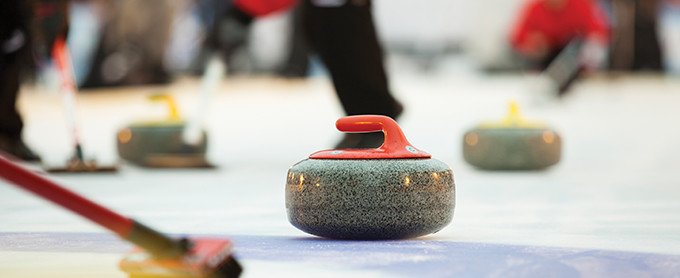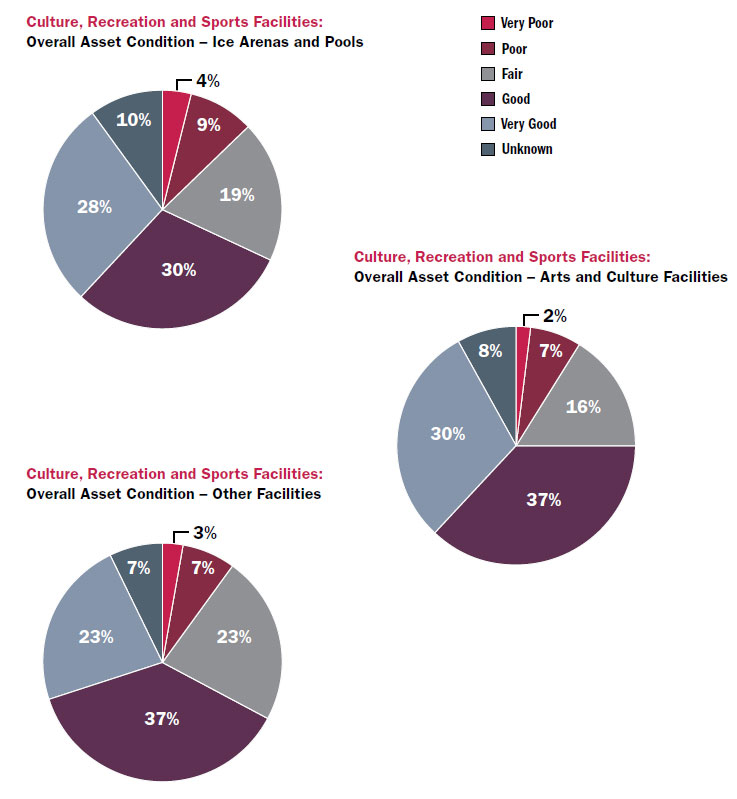The Canadian Infrastructure Report Card
FrançaisCulture, recreation and sports facilities
Rated: Good

Whether as individuals or as part of team, Canadians are making use of culture, recreation and sport infrastructure to stay active and have fun.
Our survey included several types of culture, recreation and sport facilities:
- Ice arena facilities: Indoor ice arenas with 1-5 pads or more, outdoor ice arenas.
- Pool facilities: Indoor pools of 25 metres or 50 metres or more, leisure pools, outdoor pools, wading pools, splash pads.
- Arts and culture facilities: Galleries, libraries, museums and archives, presentation and performance spaces.
- Other facilities: Indoor and outdoor skate parks, indoor curling rinks, indoor and outdoor stadiums, indoor and outdoor tennis courts, indoor and outdoor sports fields, community centres, multi-purpose facilities.
The current state
These assets have a consistent condition across this category. Approximately 30-35% of them are in fair condition or worse, and a large proportion of some facility types are more than 50 years old.
The asset classes in the worst condition (i.e., more than 30% are in fair, poor or very poor condition) include single pad ice arenas, outdoor pools and wading pools, indoor 25-metre pools, indoor curling rinks and tennis courts.
We assessed these assets using a defined scale and their age profile.
This asset category is complicated given the public’s expectations around criteria unrelated to a facility’s physical condition. This includes, for example, revised amenity requirements as demographics shift, and updating facilities for better environmental/energy performance, etc. These are important considerations that are not fully captured in traditional condition assessment data. - Sports fields and courts ESL of 25 years.
- Playgrounds and other park equipment ESL of 10-15 years depending on the equipment, and playground structures 25-50 years depending on material.
- Asphalt trails and parking lots ESL of 25 years.
- Buildings and structures ESL of 40 years (before they need some substantial refurbishment).
Culture, recreation and sports facilities by the numbers
